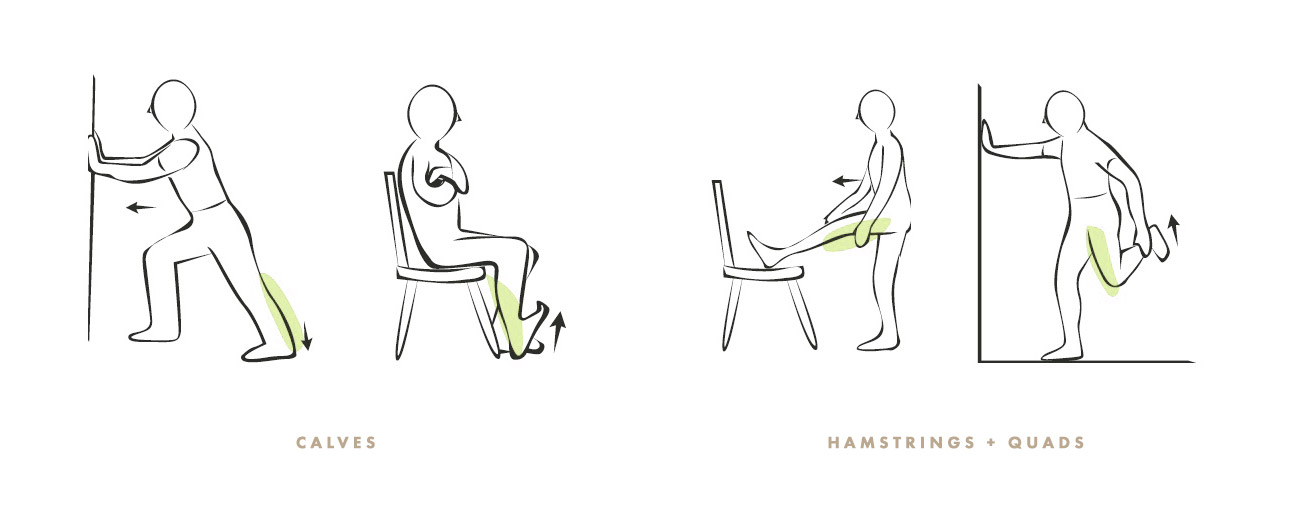RESOURCE LIBRARY
Sprint Your Way to Healthier Running and Fewer Running Injuries
So you’ve made the decision to start running. Congratulations! It’s a great way to improve your health and your quality of life.
Like all physical activity, however, running carries the risk of injury. It’s important to know how to prevent injury and what steps to take should injuries happen. The following S.M.A.R.T. tips for running (Stretch, Move, Add it up, Reduce strain, Talk to a physiotherapist) have been prepared for you by the Canadian Physiotherapy Association (CPA) to help you get the most enjoyment out of your running program.

Get the most out enjoyment out of your running program with these technical tips.
Image via Unsplash.
Stretch – before and after your run
Stretching will help to relax your mind, as well as:
• Prepare your body for activity;
• Reduce the risk of muscle injury;
• Restore full mobility after an injury;
• Improve performance in your running;
• Reduce muscle tension; and
• Promote circulation
When stretching, physiotherapists recommend that you:
• Warm up by walking for at least five minutes;
• Do slow, controlled movements to the point where you feel a mild tension in the muscle. If this pull lessens, stretch a little more. It should never be painful;
• Hold the position for 20 – 30 seconds, and don’t ‘bounce’;
• Breathe regularly throughout the stretch; and
• Repeat the stretch on the opposite side, 3 -5 times.
Runners should concentrate on stretching the calf (gastrocnemius, soleus), thigh (quadriceps, hamstrings), groin (adductors), buttocks (gluteals), hip flexors (rectus femoris, psoas and tensor fascia lata), the iliotibial band (outside of thigh) and back.



Cool down
When your run is over, take time for a cool down –a brief, relaxed walk along with some of the same stretches you did before your run. Spend at least 10 minutes cooling down to help work the metabolic wastes and excess fluid out of your muscles, and to allow your heart rate to slow down gradually. By the time you stop, your pulse should be within 20 beats-per-minute of your resting heart rate.
If you have existing injuries affecting your running technique, consult a physiotherapist for a detailed assessment before returning to your regular activities.
Move – today for tomorrow
Running is a great activity to get your whole body in motion, and body posture is an important part of your running technique. Before your run, take a couple of deep breaths to expand your lungs. After you exhale, maintain this position, with shoulders down, relaxed and slightly back. Keep your head up and avoid excessive arm movement while running.
Add it up – an hour is power
With proper clothing you can plan your runs 12 months of the year.
• In winter, wear a hat to minimize heat loss;
• In summer drink at least two glasses of water before a run to ensure proper hydration;
• Wear shoes that give your feet the support they need. Proper shoes can help improve the biomechanics of your feet and legs, which will help prevent injuries; and
• Ask for advice at a specialized running shop.

The S.M.A.R.T. approach to prepare your body for activity
Image via Unsplash.
Reduce strain – use what works for you
• Start running at a slow pace if you haven’t been active for a period of time. Increase speed as your conditioning improves; or
• Use the run / walk technique – start with a two-minute run / one-minute walk, gradually increasing your run time.
• Increase your distance by 10 per cent each week;
• Your running pace should always allow you to carry on a conversation, while you breathe comfortably;
• Take time to recover between runs. The most important day in any running program is your rest day. They are as vital as training days. Rest days give your muscles time to recover and build strength;
• Vary the direction or route you run. Repeating the same course puts strain on the same parts of your body each time you train; and
• Eat sensibly and drink plenty of fluids. Get to know the best time for you to eat or drink before running to prevent cramps or nausea. Maintain your level of hydration.
If you do experience an injury, use the R.I.C.E. steps to reduce pain, minimize internal swelling, and promote healing.
Rest – to protect yourself from further injury;
Ice – to help reduce pain and swelling within the first 48 – 72 hours after an injury. Note: Ice packs should never be on longer than 15 minutes or more than twice an hour;
Compression – wrap an elastic bandage around the injured area to control swelling. It should not feel uncomfortably tight; and
Elevation – Use pillows to raise the injured limb above the level of the heart while lying down.
Before you can safely return to running, it is essential to regain strength, flexibility, balance and co-ordination. Begin your retraining at 50% of your pre-injury level. Consult a physiotherapist for a detailed assessment and management of your injury. Call us at 604 568 4628 or book an appointment online today.
Used with permission from the Canadian Physiotherapy Association.
filed in
Latest Articles

The Anteriorly Tilted Pelvis
RESOURCE LIBRARY This post was written by Go! Physio Kinesiologist, Steve Dempster. The pelvis has several important functions. Its primary role is to support the weight of the upper body when sitting and to transfer this weight to the lower limbs when...

Cancer Surgery and Rehab
RESOURCE LIBRARY Go! Physiotherapy Physiotherapists at Go! Physiotherapy are equipped with clinical rehabilitation expertise, oncology specialization, manual lymphatic drainage certification (LANA), and decades of rehabilitation experience in exercise...

We are still open! How? Our response to the COVID-19 pandemic
LATEST NEWS Go! Physiotherapy Staff Dear Friends of Go! Physiotherapy, These are unprecedented times. It feels that by the time we have finished crafting this sentence, things will have changed. And we here at Go! Physio are rolling...

TeleRehab FAQs
RESOURCE LIBRARY Go! Physiotherapy Staff FREQUENTLY ASKED QUESTIONSDue to the COVID-19 pandemic affecting our community, we are committed to keeping our patients and staff safe by providing online video and phone calls (telerehab) until physical distancing measures...
Unlock Your Body’s Strength and Mobility Today
Book Online
Current patient? New, but know exactly what you’re looking for?
Contact Us
Never tried physiotherapy? Not sure where to start? Our friendly staff will guide you towards the best treatment for your situation.
Call: 604-568-4628
Email: go@gophysiotherapy.ca
